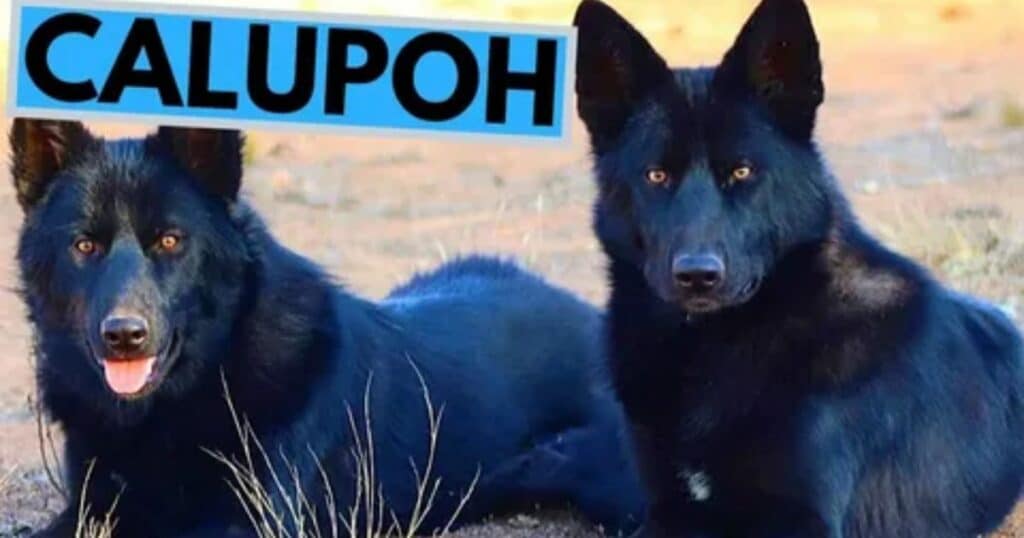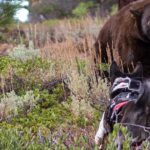Are you ready to embark on a journey into the world of a truly unique canine? Meet the Calupoh dog, also known as the Mexican Wolfdog, a breed that combines the wild allure of wolves with the loyal companionship of domestic dogs.
In this comprehensive guide, we’ll explore everything you need to know about this fascinating wolf-dog mix, from its rich history to its care requirements. Whether you’re considering adding a Calupoh dog to your family or simply curious about this pre-Columbian canine, buckle up for an exciting ride.
The History Of Calupoh Dogs
Origins Of The Calupoh Breed
The Calupoh’s story begins in the misty realms of Mexican history, but its modern incarnation is a product of the late 20th century. In the 1990s, a group of passionate breeders set out to create a canine hybrid that would embody the spirit of Mexico’s ancient wolves while possessing the temperament suitable for domestic life.
This ambitious breeding program carefully selected gray wolves and specific dog breeds to create the Calupoh dog we know today. While the exact mix remains a bit of a mystery (as with many great recipes.), it’s believed that breeds like German Shepherds and Alaskan Malamutes may have played a role in the Calupoh’s development.
But why create such a breed? It wasn’t just for looks, although the Calupoh certainly turns heads. The goal was to preserve a piece of Mexico’s natural heritage in a form that could thrive in modern society. It’s like having a living, breathing piece of history wagging its tail in your living room.
READ MORE: What Is A Skinwalker Dog? Myth Or Reality
Historical Significance
The Calupoh’s significance goes far beyond its recent breeding history. These dogs are deeply connected to ancient Mexican cultures, particularly the Aztecs, who revered wolves as symbols of strength and wisdom. The name “Calupoh” itself is derived from Nahuatl, the language of the Aztecs, meaning “dog of coyote appearance.”
Imagine walking beside a Calupoh and feeling a connection to the warriors and priests of ancient Mexico who once walked alongside wolves. These dogs embody the spirit of their wild ancestors, serving as a bridge between the untamed wilderness and our modern world.
“The Calupoh is not just a dog; it’s a living testament to Mexico’s rich biological and cultural heritage.”
Dr. Maria Gonzalez, Canine Historian.
Physical Attributes Calupoh Dogs
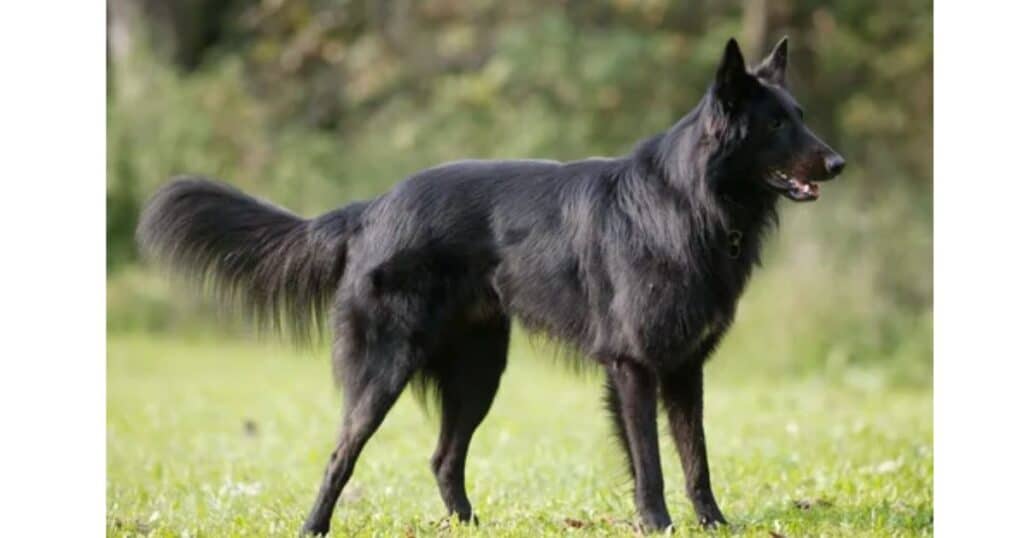
Unique Appearance
When you first lay eyes on a Calupoh dog , you might do a double-take. Are you looking at a wolf or a dog? This wolf-like companion boasts a striking appearance that’s sure to turn heads at the dog park.
Size: Calupohs are big dogs, no doubt about it. Males typically stand 27-30 inches tall at the shoulder, while females are slightly smaller at 25-28 inches. Weight-wise, you’re looking at anywhere from 55 to 90 pounds of muscular canine.
Coat: Their double coat is thick and plush, perfect for running your fingers through (if they let you!). The outer coat is coarse and straight, while the undercoat is soft and dense. This combination provides excellent protection against various weather conditions.
Colors: Calupoh coats come in a range of wolf-like hues, including:
- Gray
- Black
- White
- Sable
- Combinations of these colors
But it’s their eyes that really captivate. Amber, brown, or even a mesmerizing blue-green – Calupoh eyes are truly windows to their wild soul.
Distinctive Characteristics
The Calupoh’s physical build is a testament to its wolf ancestry and carefully selected domestic dog traits. Here’s a breakdown of what makes them stand out:
- Muscular yet agile: Picture a canine athlete, and you’re on the right track. Calupohs are built for endurance and speed, with a lean, powerful frame that allows them to cover great distances with ease.
- Wolf-like features: From their erect ears to their bushy tails, Calupohs retain many wolf-like characteristics. Their muzzle is typically longer and more tapered than most domestic breeds.
- Strong legs: Built for running and jumping, their legs are straight and strong, ending in compact, well-arched feet.
- Broad chest: A deep, broad chest provides plenty of room for the heart and lungs, contributing to their stamina.
| Feature | Description |
| Height | Males: 27-30 inches, Females: 25-28 inches |
| Weight | 55-90 pounds |
| Coat | Double coat: coarse outer, soft undercoat |
| Colors | Gray, black, white, sable, or combinations |
| Eyes | Amber, brown, or blue-green |
| Build | Muscular, agile, wolf-like |
Temperament And Behavior Calupoh Dogs
Personality Traits
The Calupoh personality is a fascinating cocktail of wild instincts and domestic devotion. Understanding their unique temperament is crucial for anyone considering this breed as a companion.
- Intelligence: Calupohs are off-the-charts smart. This intelligence is both a blessing and a challenge. They can learn quickly but may also outsmart an unprepared owner.
- Loyalty: Once bonded, Calupoh is fiercely loyal to their family. They form deep connections and are protective of their loved ones.
- Independence: That wolf ancestry shows up in their independent streak. Coupons aren’t clingy dogs and can be comfortable spending time alone.
- Alertness: Always vigilant, these dogs make excellent watchdogs. They’re quick to alert their owners to any potential threats.
- Reserved with strangers: While not aggressive, Calupohs tend to be aloof with people they don’t know. Proper socialization is key to managing this trait.
- High energy: Expect a dog that needs plenty of physical and mental stimulation. A bored Calupoh can become destructive.
Socialization And Training
When it comes to raising a well-adjusted Calupoh, remember this mantra: “It’s never too early to start.” Early and consistent socialization is crucial for these dogs to develop into well-rounded adults.
Socialization Tips:
- Expose your Calupoh puppy to a variety of people, animals, and environments from a young age.
- Use positive experiences to build confidence and reduce fear of new situations.
- Enroll in puppy classes for structured socialization opportunities.
Training Techniques:
- Use positive reinforcement methods. Calupohs respond well to rewards and praise.
- Be consistent with rules and boundaries. These intelligent dogs will quickly pick up on inconsistencies.
- Keep training sessions short and engaging to match their attention span.
- Incorporate mental stimulation into training. Puzzle toys and scent work can be great tools.
The Secret to Success: Consistency is key when training a Calupoh Dog. These dogs thrive on routine and clear expectations. Establish yourself as a calm, confident leader, and your Calupoh will be more likely to follow your lead.
“Training a Calupoh is like dancing with a wolf. You need to lead with confidence, but also be willing to adapt your steps.” –
Carlos Ramirez, Professional Dog Trainer.
Health And Exercise Needs
Common Health Concerns
While generally healthy, Calupohs can be prone to certain health issues. Being aware of these potential problems can help you provide the best care for your wolf-dog mix.
- Hip and Elbow Dysplasia: Like many large breeds, Calupohs can suffer from these joint conditions. Regular check-ups and maintaining a healthy weight can help prevent or manage these issues.
- Eye Problems: Keep an eye out for conditions like cataracts or progressive retinal atrophy. Regular veterinary eye exams are recommended.
- Dental Issues: Those powerful jaws need proper care. Regular teeth brushing and dental check-ups are essential to prevent periodontal disease.
- Sensitivity to Anesthesia: Some wolf-dog hybrids can have unusual reactions to anesthesia. Always inform your vet about your dog’s breed before any procedures.
Exercise Requirements
Owning a Calupoh means committing to an active lifestyle. These high-energy dogs need plenty of exercise to stay healthy and happy.
Daily Exercise Needs:
- At least 1-2 hours of intense physical activity daily
- A mix of activities: running, hiking, swimming, fetch
- Mental stimulation through training and puzzle toys
Fun Activities for Calupohs:
- Agility courses
- Scent work or tracking
- Canine sports like flyball or disc dog
- Long hikes in nature
Remember, a tired Calupoh is a happy Calupoh. Regular exercise not only keeps them physically fit but also helps prevent behavioral issues that can arise from boredom or pent-up energy.
Grooming And Maintenance
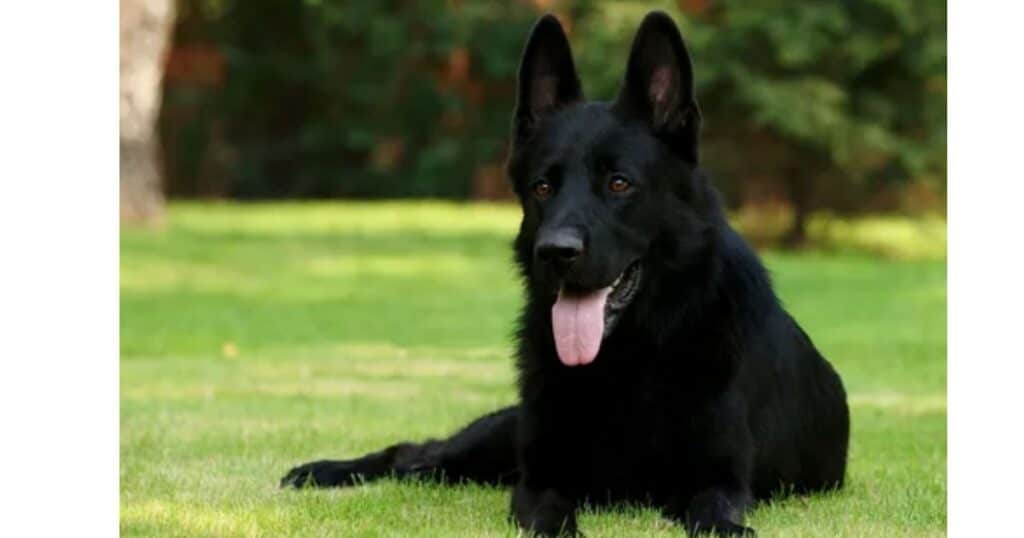
Coat Care
That beautiful, thick coat requires regular attention to keep it healthy and looking its best.
Brushing Battles:
- Brush your Calupoh 2-3 times a week normally
- During shedding seasons (spring and fall), daily brushing is necessary
- Use a slicker brush for the outer coat and an undercoat rake for the dense undercoat
Shedding Seasons: Prepare for a furry snowstorm twice a year! Calupohs “blow” their coats in spring and fall. During these times, increase the brushing frequency and consider using a de-shedding tool.
Bathing: Calupohs generally don’t need frequent baths unless they get particularly dirty. Their coat has natural oils that help keep it clean and healthy. When you do bathe them, use a dog-specific shampoo to avoid stripping these oils.
Grooming Routine
A comprehensive grooming routine goes beyond just coat care. Here’s what you need to know:
- Nail Care:
- Trim nails every 3-4 weeks
- If you hear clicking on hard floors, it’s time for a trim
- Consider using a grinder for smoother edges
- Ear Cleaning:
- Check ears weekly for signs of infection or wax build-up
- Clean gently with a veterinarian-approved ear cleaner
- Never insert anything into the ear canal
- Dental Hygiene:
- Brush teeth 2-3 times a week (daily is ideal)
- Use dog-specific toothpaste and toothbrush
- Offer dental chews as a supplement to brushing
By sticking to a regular grooming routine, you’ll not only keep your Calupoh looking great but also have the opportunity to check for any unusual lumps, bumps, or skin issues.
Feeding And Dietary Considerations
Nutritional Needs
Calupohs, with their wolf-like heritage and active lifestyle, have specific nutritional requirements to keep them healthy and energetic.
Key Nutrients:
- Protein: High-quality protein should make up about 25-30% of their diet. Look for meat as the first ingredient in commercial foods.
- Fats: Healthy fats are crucial for coat health and energy. Aim for about 15-20% fat content.
- Carbohydrates: While not as essential as protein and fat, complex carbs provide energy and fiber.
- Vitamins and Minerals: A balanced diet should include essential vitamins and minerals for overall health.
Calorie Needs: An adult Calupoh typically needs between 1,500 to 2,000 calories per day, depending on their size, age, and activity level. Always consult with your veterinarian to determine the right amount for your specific dog.
Meal Planning
Creating a meal plan for your Calupoh involves considering their life stage, activity level, and individual needs.
Feeding Schedule:
- Puppies (2-6 months): 3-4 meals per day
- Juveniles (6-12 months): 2-3 meals per day
- Adults (1+ years): 2 meals per day
Portion Control: Measure your Calupoh’s food to prevent overfeeding. Obesity can lead to health issues and exacerbate conditions like hip dysplasia.
Treats: While treats are great for training, they should make up no more than 10% of your Calupoh’s daily calorie intake.
| Age | Meals per Day | Approximate Amount |
| 2-6 months | 3-4 | 2-3 cups total |
| 6-12 months | 2-3 | 3-4 cups total |
| 1+ years | 2 | 4-5 cups total |
Remember, these are general guidelines. Always adjust based on your individual dog’s needs and consult with your veterinarian for personalized advice.
Creating A Calupoh-Friendly Environment
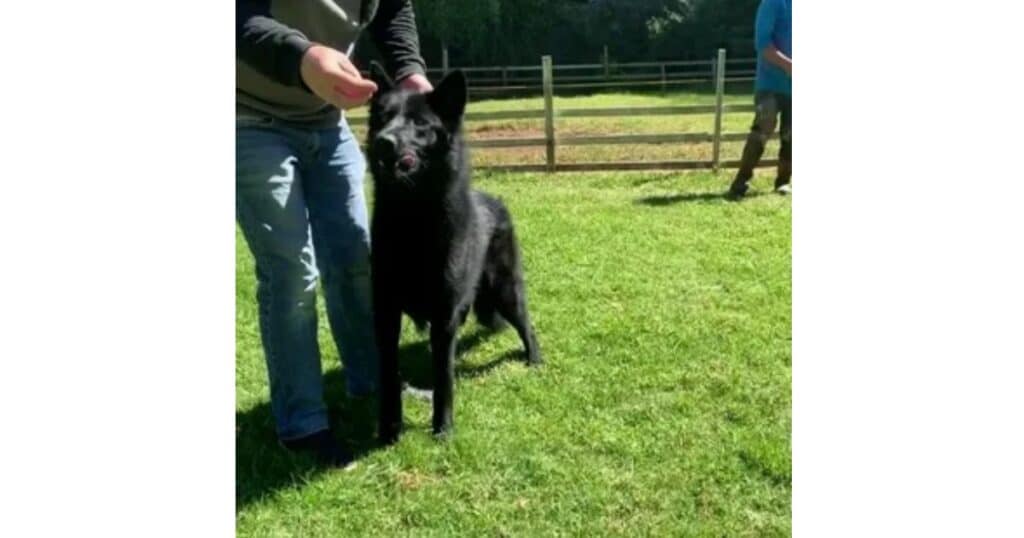
Living Arrangements
Calupohs need space to thrive. Here’s how to create the perfect environment for your wolf-dog mix:
- Space Needs:
- A large, securely fenced yard is ideal
- If living in an apartment, be prepared for multiple long walks daily
- Indoor space should allow for stretching out and some play
- Outdoor Access:
- Ensure fences are at least 6 feet high and dig-proof
- Provide shaded areas for outdoor relaxation
- Consider a doggy door for easy indoor/outdoor access
- Temperature Control:
- Calupohs have a thick coat and can overheat easily
- Provide cool areas in summer and warm, draft-free spots in winter
- Never leave your Calupoh dog outside in extreme weather conditions
Enrichment Activities
Keeping your Calupoh mentally stimulated is just as important as physical exercise. Here are some ideas:
- Puzzle Toys:
- Kong toys filled with treats
- Interactive puzzle feeders
- Hide-and-seek games with toys or treats
- DIY Challenges:
- Create obstacle courses in your yard
- Set up a digging pit with hidden toys
- Use cardboard boxes to create exploration zones
- Scent Work:
- Hide treats around the house or yard for your dog to find
- Use snuffle mats to engage their natural foraging instincts
- Consider enrolling in scent work classes
Remember, a well-stimulated caupoh is less likely to engage in destructive behaviors. Rotate toys and activities to keep things interesting for your intelligent companion.
Frequently Asked Questions About the Calupoh Dog Breed
Are Calupohs good with kids?
While couples can be gentle with family members, their size and energy level mean they should always be supervised around young children. Early socialization is key.
How much do they shed?
Calupohs are heavy shedders, especially during shedding seasons in spring and fall. Daily brushing during these times is necessary.
Can Calupohs live in apartments?
While possible, it’s challenging. Calupohs need lots of space and exercise. If living in an apartment, be prepared for multiple long walks and trips to the dog park daily.
Are they legal in all states?
Laws regarding wolf-dog hybrids vary by state and even by county. Always check local regulations before getting a Calupoh.
How long do Calupohs live?
With proper care, calupohs typically live 12-14 years.
Conclusion
The Calupoh dog is truly a unique breed, blending the mystique of wolves with the companionship of domestic dogs. Their intelligence, loyalty, and striking appearance make them a fascinating choice for experienced dog owners who are up for a challenge.
However, owning a Calupoh dog is not a decision to be taken lightly. They require dedicated training, extensive socialization, plenty of exercise, and a commitment to meeting their physical and mental needs. In return, they offer unwavering loyalty and a connection to Mexico’s rich canine heritage.
Before bringing a calupoh dog into your life, do thorough research, connect with breed-specific rescues or reputable breeders, and honestly assess whether your lifestyle can accommodate these magnificent animals. With the right preparation and commitment, a calupoh can be an extraordinary companion, bridging the gap between the wild and the domestic in your very own home.
ALSO READ MORE: 25 Reasons Why People Think Schnauzers Are The Worst Dogs (But Are They Really?)

Davin Connor is an experienced author with 3 years in pets writing. Known for concise, informative content, he shares expertise on pet care, behavior, and health through his engaging articles.
